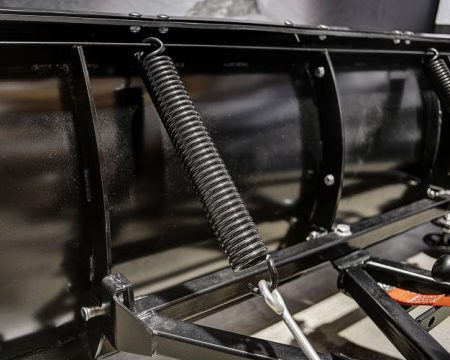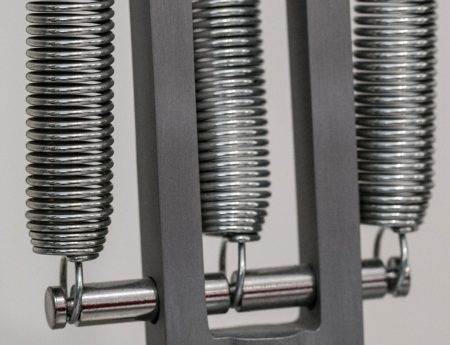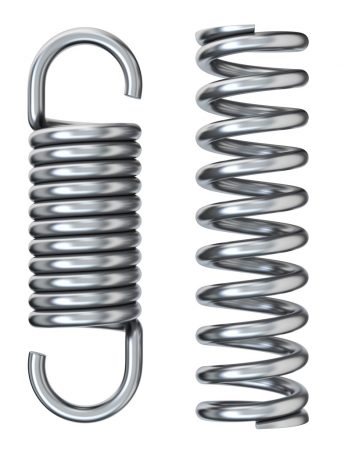Whereas many applications require springs that reduce force and perform a pushing action, others require springs that oppose extension by pulling them back together. Extension springs, also known as tension springs, are found in many applications that we use in our daily lives, such as a household stapler, snowplows, garage doors, automotive interiors and exteriors, vise-grip pliers, carburetors, trampolines, children’s toys, washing devices, farm machinery and various types of spring-tensioning appliances. Extension springs come in a wide array of sizes, from small medical devices to machinery brake springs.


While compression springs are used to store or release energy and absorb shock, extension springs are designed to create a resistance to a pulling force. Extension springs are attached at both ends to other components. When these components separate, the spring brings them together again. Typically, extension springs are cylindrical helical springs made out round wire and have either machine loops or cross center loops. They have consistent mechanical energy to return to its no-load, compressed position.
Extension springs are usually made with initial tension, which forces the coils to press against each other in the unloaded position, determining how tightly together it’s coiled. Ajax extension springs are wound with an initial tension force to achieve the load requirements of a particular application.
Initial tension is directly linked to spring index, which is measured by dividing the spring’s mean diameter by wire diameter. As the spring stretches, a heavier load force is required to continue the expansion.
The Most Common Types of Extension Spring Ends Are…
The most commonly used end styles for extension springs include crossover, machine style, side style, and double loop ends.
On a crossover style, the wire does just that – it crosses over the center of the spring – whereas the machine style has the wire coming from directly out of the spring body. Both function the same way, however, the crossover ends are mostly on small springs and machine ends are mostly on larger springs. Machine style end hooks are stronger because the radius of the bend to make the hook is not as pronounced. Other types of extension spring ends include:
- Extended Hook End
- Raised Loop End
- Cross Center Loop End
- Double Cross Center Loop End
- Double Swung Over Center Loop End
- Single Swung Over Center Loop End
The Difference Between Compression and Extension Springs
The main difference is that the purpose of extension springs is to hold two things together, while compression springs are designed to keep components apart. While compression springs and extension springs work in opposition with each other, they are both necessary for different products.
Unlike compression springs, extension springs do not have a solid stop to prevent overloading. Thus, design stresses are generally lower for extension than compression springs. However, a special type of extension spring, known as a drawbar spring, does have a solid stop. It is essentially a compression spring with special hooks.
Extension springs are typically metal because of the stiffness of the material – hard-drawn steel, spring steel, stainless steel and brass are most common – but other materials may be used in custom applications. Ajax Springs provides design units for extension springs in both imperial and metric standards.



